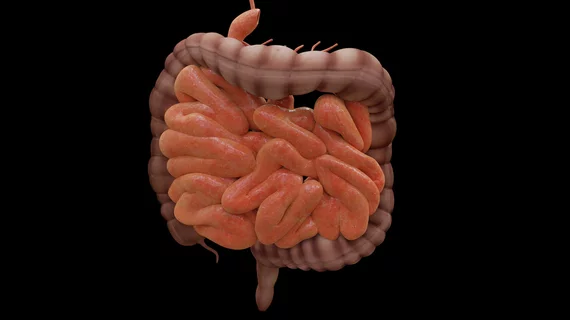AI guides delicate CT decisionmaking in the ED
Emergency physicians have a tough time identifying patients who have Crohn’s disease and truly need a CT scan to pinpoint the cause of acute abdominal distress.
Help may be on the way. Researchers have used machine learning to accurately separate these patients from Crohn’s patients who present with the same complaint—but can safely avoid the repeated exposure to contrast materials and ionizing radiation that CT would otherwise visit upon them.
The work was carried out by gastroenterologists and radiologists at Tel Aviv University in Israel and is described in a study published July 9 in Digestive and Liver Disease.
Jacob Ollech, MD, and colleagues retrospectively reviewed 101 emergency treatments of patients with Crohn’s who underwent abdominopelvic CT.
The key discoveries they sought were cases in which a scan yielded clinically actionable findings. These the researchers defined as bowel obstruction, perforation, intra-abdominal abscess or complicated fistula.
Of the 101 cases reviewed, 44 (43.5%) had such findings on CT.
To test an AI approach for making the call, Ollech and colleagues used a machine-learning technique to build a decision-support tool needing only four routine clinical variables.
The tool succeeded in placing patients into low- and high-risk subgroups.
The success enabled the researchers to risk-stratify patients by each one’s probability for clinically actionable findings on abdominopelvic CT.
Ollech and co-authors acknowledge as limitations their small sample, retrospective design and lack of external validation.
Further, many patients fell into an intermediate risk zone, meaning they would have needed a standard workup to guide CT decisionmaking in a real-world setting anyway.
Nevertheless, they conclude,
[W]e believe this study shows that a machine learning-based tool is a sound approach for better selecting patients with Crohn’s disease admitted to the ED with acute gastrointestinal complaints for abdominopelvic CT: reducing the number of CTs performed while ensuring that patients with high risk for clinically actionable findings undergo abdominopelvic CT appropriately.”
Abstract posted here (full study behind paywall).

